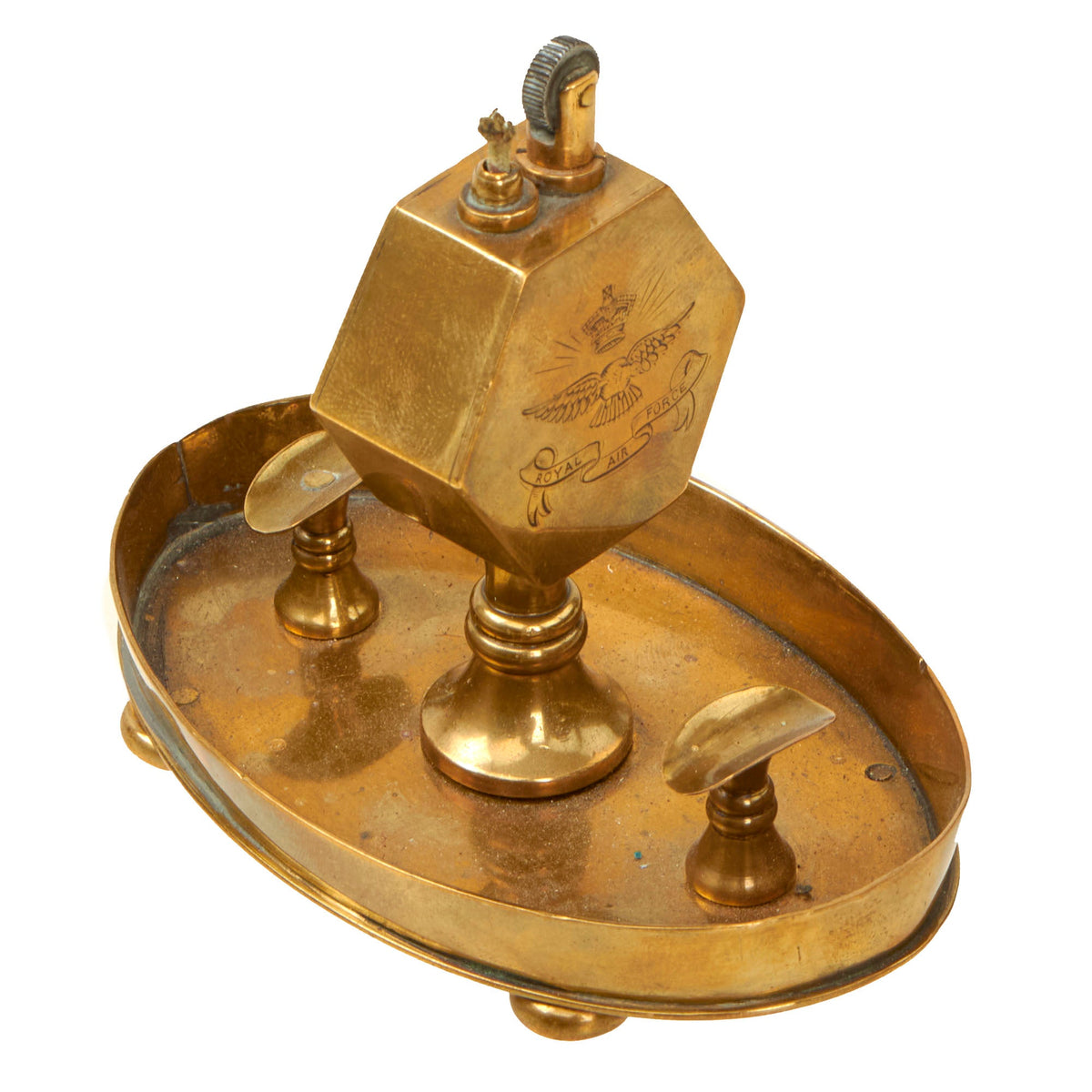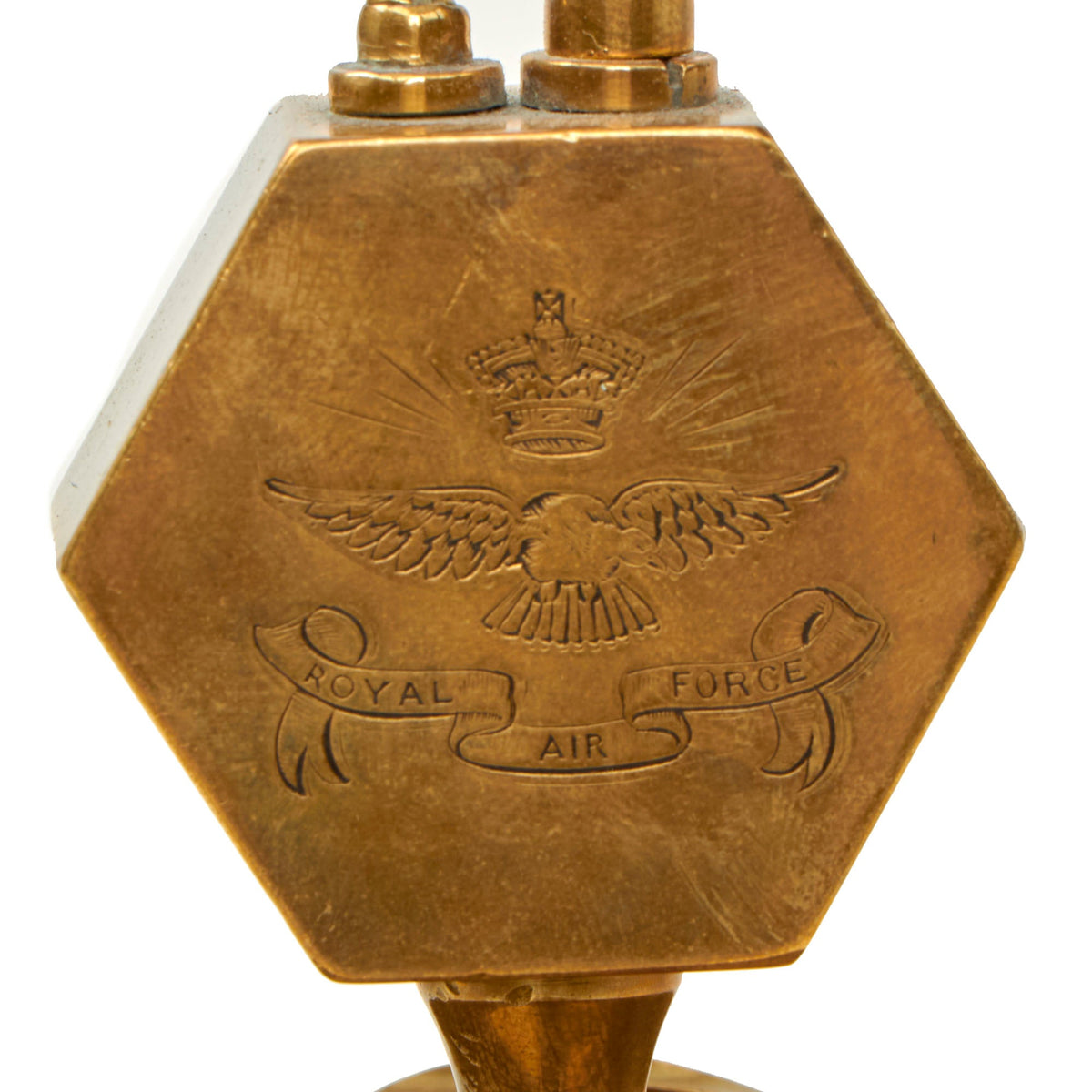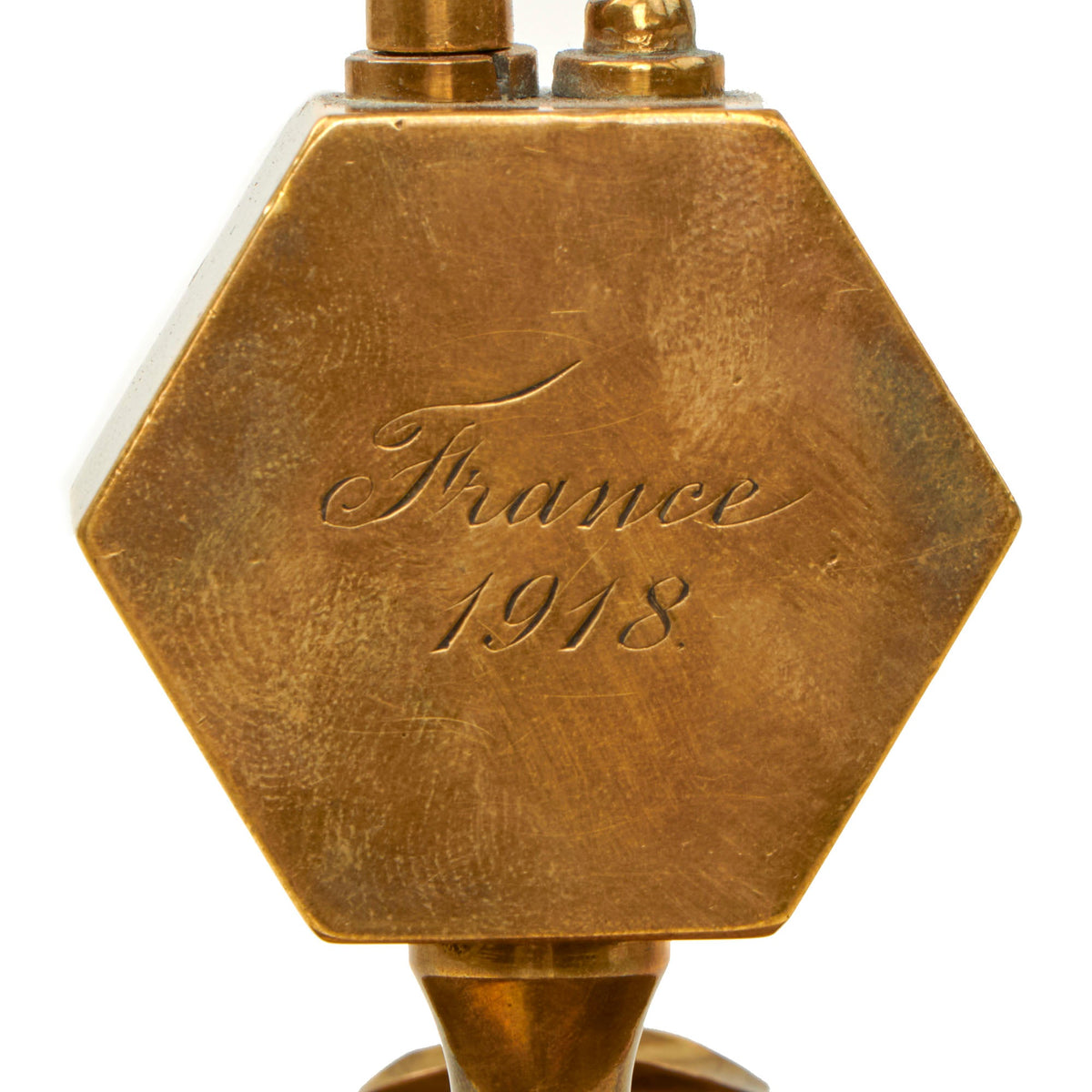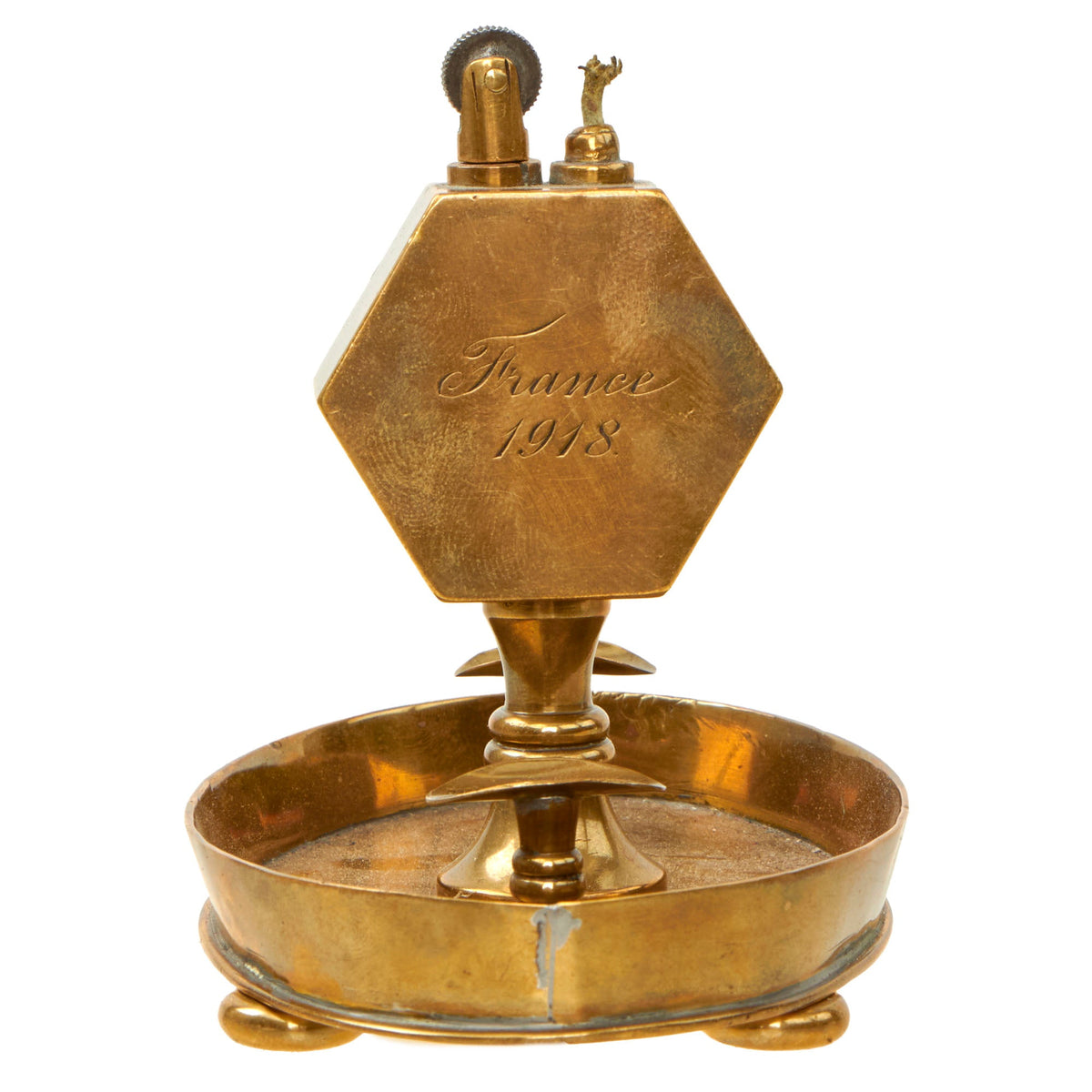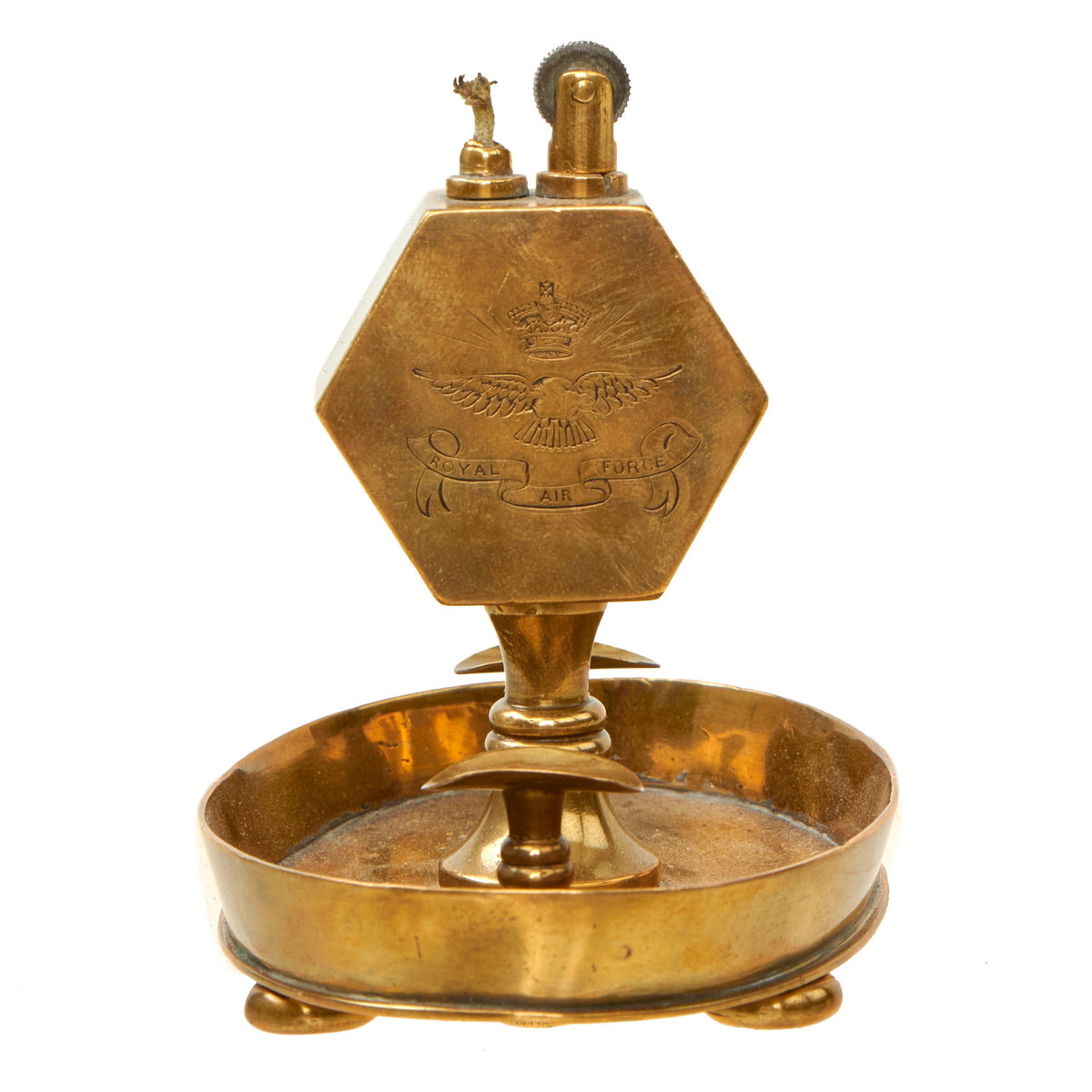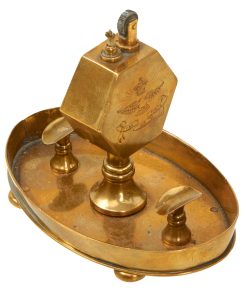Original British WWI Royal Air Force RAF Brass Tabletop Lighter / Ashtray Dated 1918 – Only Referred To As “RAF” For Short Period During WWI Original Items
$ 395,00 $ 118,50
Original Item: Only One Available. This is an exceptional piece – a tabletop lighter and ashtray combination from the Royal Air Force during World War I. The lighter seems to have been created as a commemorative item related to the service and was most likely owned by an officer of the Royal Air Force. It is fully functional, complete with a wick and flint. Although we haven’t tried to fill the reservoir with fuel, we are confident that it should work perfectly without any issues. The sides of the lighter portion does have nice engraving consisting of the text FRANCE 1918 and the Royal Air Force winged insignia on the opposite, both of which are still easily distinguishable.
While the British were not the first to make use of heavier-than-air military aircraft, the RAF is the world’s oldest independent air force; first air force to become independent of army or naval control. The RAF was founded on 1 April 1918 (during World War I) by the amalgamation of the Royal Flying Corps (RFC) and the Royal Naval Air Service (RNAS), as recommended in a report prepared by Jan Smuts. At that time it was the largest air force in the world. Its headquarters was located in the former Hotel Cecil.
The lighter itself sits at 3 ¾” tall with base measurements of 4 ⅜” x 2 ⅞” and is presented in wonderful condition. It comes more than ready for further research and display.
The Royal Air Force
The Royal Air Force (RAF) is the air and space force of the United Kingdom, British Overseas Territories and Crown Dependencies. It was formed towards the end of the First World War on 1 April 1918, becoming the first independent air force in the world, by merging the Royal Flying Corps (RFC) and the Royal Naval Air Service (RNAS). Following the Allied victory over the Central Powers in 1918, the RAF emerged as the largest air force in the world at the time. Since its formation, the RAF has played a significant role in British military history. In particular, during the Second World War, the RAF established air superiority over Hermann Göring’s Luftwaffe during the Battle of Britain, and led the Allied strategic bombing effort.
The RAF’s mission is to support the objectives of the British Ministry of Defence (MOD), which are to “provide the capabilities needed to ensure the security and defence of the United Kingdom and overseas territories, including against terrorism; to support the Government’s foreign policy objectives particularly in promoting international peace and security”. The RAF describes its mission statement as “… [to provide] an agile, adaptable and capable Air Force that, person for person, is second to none, and that makes a decisive air power contribution in support of the UK Defence Mission”. The mission statement is supported by the RAF’s definition of air power, which guides its strategy. Air power is defined as “the ability to project power from the air and space to influence the behaviour of people or the course of events”.
Today, the Royal Air Force maintains an operational fleet of various types of aircraft, described by the RAF as being “leading-edge” in terms of technology. This largely consists of fixed-wing aircraft, including those in the following roles: fighter and strike, airborne early warning and control, intelligence, surveillance, target acquisition, and reconnaissance (ISTAR), signals intelligence (SIGINT), maritime patrol, air-to-air refueling (AAR) and strategic & tactical transport. The majority of the RAF’s rotary-wing aircraft form part of the tri-service Joint Helicopter Command in support of ground forces. Most of the RAF’s aircraft and personnel are based in the UK, with many others serving on global operations (principally over Iraq and Syria) or at long-established overseas bases (Ascension Island, Cyprus, Gibraltar, and the Falkland Islands). Although the RAF is the principal British air power arm, the Royal Navy’s Fleet Air Arm and the British Army’s Army Air Corps also operate armed aircraft.
Fast Shipping with Professional Packaging
Thanks to our longstanding association with UPS FedEx DHL, and other major international carriers, we are able to provide a range of shipping options. Our warehouse staff is expertly trained and will wrap your products according to our exact and precise specifications. Prior to shipping, your goods will be thoroughly examined and securely secured. We ship to thousands clients each day across multiple countries. This shows how we're dedicated to be the largest retailer on the internet. Warehouses and distribution centres can be located throughout Europe as well as the USA.
Note: Orders with more than one item will be assigned a processing date depending on the item.
Before shipping before shipping, we'll conduct a thorough inspection of the items you have ordered. Today, the majority of orders will be delivered within 48 hours. The delivery time will be between 3-7 days.
Returns
The stock is dynamic and we cannot completely manage it because multiple stakeholders are involved, including our factory and warehouse. So the actual stock may alter at any time. It's possible that you may not receive your order once the order has been made.
Our policy is valid for a period of 30 days. If you don't receive the product within 30 days, we are not able to issue a refund or an exchange.
You can only return an item if it is unused and in the same state as the day you received it. You must have the item in its original packaging.
Related products
Uncategorized
Uncategorized
Uncategorized
Uncategorized
Australian WWII Owen MK1 Machine Carbine SMG Custom Fabricated Replica with Sling Original Items
Uncategorized
Uncategorized
Uncategorized
Uncategorized
Uncategorized
Armoured Fighting Vehicles of the World: AFVs of World War One (Hardcover Book) New Made Items
Uncategorized
Uncategorized
Uncategorized
Uncategorized
Uncategorized
Band of Brothers ORIGINAL GERMAN WWII Le. F.H. 18 10.5cm ARTILLERY PIECE Original Items
Uncategorized
Uncategorized
Uncategorized
Armored Burgonet Helmet & Polearm from Scottish Castle Leith Hall Circa 1700 Original Items
Uncategorized
